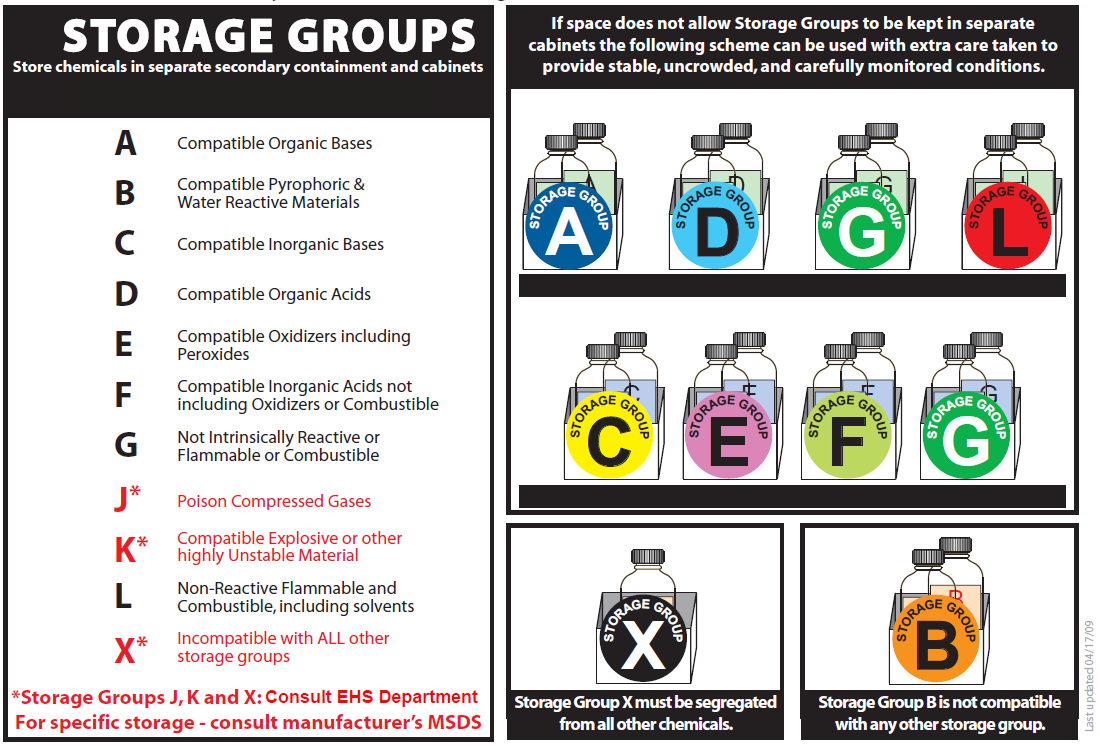Chemical Storage
The safety of our staff, faculty and students are the upmost priority for the Office of Risk Management. A survey will be conducted annually to ensure laboratories are following correct chemical storage and inventory procedures. It is imperative that we present the most up-to-date information regarding chemical storage guidelines to our staff, faculty, and students. The chemical storage guidelines below will provide a quick and efficient way to determine the proper storage and segregation of different types of chemicals.
Chemicals should be properly stored and organized to ensure proper handling by the staff, faculty and students. The first step to proper chemical storage is via solids, liquids and gases categorization. The chemicals can then be further divided into the hazards classification such as reactivity. Finally, they should be organized alphabetically for quick retrieval and usage. The correct separation of incompatible chemicals may reduce and eliminate any potential injuries and accidents that may occur. Below are some resources that can help you with determining the chemicals compatibility, incompatibility, and reactivity.
General Storage Guidelines:
- Understand the chemicals that you are working with. If necessary, use the below resources to familiarize yourself with the chemicals.
- All chemicals should be placed inside a locked area with limited access.
- Flammable materials should be placed inside a flammable cabinet.
- Corrosive materials should be placed below eye level and on a shelf closer to the ground.
- Hazardous chemicals storage containers should be free of damage and properly secured.
- Chemicals should be stored in a well-ventilated area, free of heat and direct sunlight.
- Storage containers must be clearly labeled with chemical name, its concentration, received date, used date and expiration date.
- Provide adequate laboratory space for chemical storage.
- Personal Protective Equipment must be used while handling chemicals.
- SDS must be easily accessible in the laboratory either online or paper copies.
- Only use proper chemical containers for storage.
- Chemical fume hoods should not be used for chemical storage.
Compatible Storage Group Classification System:
Chemical Incompatibility Chart
NOAA Chemical Reactivity Worksheet
Source: Prudent Practices in the Laboratory, 2011 Edition;Stanford University’s Chem Tracker Storage System
